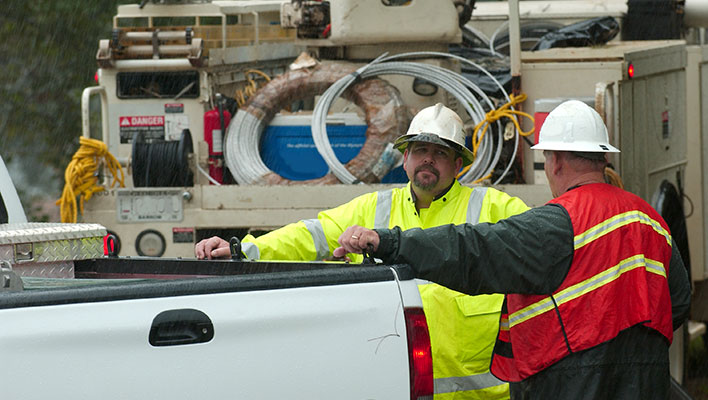With more than 30 years of experience with a leading investor owned utility, Jamie Conover brings a valuable perspective to the ARCOS blog. Drawing on his extensive background in technical performance, optimization, and incident command for electric transmission, distribution, and natural gas operations, he offers strategies to increase business agility and hit moving business targets amidst shifting workforce dynamics and climate change that is leading to more frequent and severe outages.
As utilities expand their systems and manage increasing numbers of outages with a leaner team, it’s more important than ever to have an agile resource management strategy. This imperative is even more urgent as the entire planet faces record breaking heat waves, bringing atmospheric rivers to the west coast, wildfires, monster tornadoes in the south, and large scale flash bloods to the northeast even as I write this. And we’re in the heart of hurricane season during a time when climate experts warn that the weather is only going to get worse, and utilities face a greater challenge with fewer native line workers to manage it all while relying on non-native crews and mutual assistance more than ever.
With service that is largely exposed to the elements through transmission and distribution lines, electricity providers are especially hard hit by escalating weather events, threatening the ability to deliver on our promise of reliability to customers. The types of outages we are facing and expect to contend with in the future are a rallying call for the industry to embrace digital transformation to not only react and restore power, but proactively manage and shrink ETR to new levels despite what mother nature throws at us. In this blog series, I’d like to share my thoughts and strategies on how to achieve the digital readiness and agility required to navigate the utility resource management challenges of today and tomorrow.
Status Quo Crew Management
Whether scheduling blue or red sky work, effective crew management is at the heart of utility operations, however, two pervasive challenges continue to hold back many teams. First is a universal reliance on Microsoft Excel, a perfectly good tool for the right job. But when used to store rosters, schedules, and resource information (e.g., skills, certifications, etc.), there is the potential to create static snapshots that often lead to multiple versions of the “truth.”
Utilities invest large amounts of money and time into work planning and scheduling technologies, including work management systems (WMS) and outage management systems (OMS). Such systems are designed to manage the type of work being performed like meter work and damage assessment, rather than the people and assets required to get the work done, resulting in data silos. When crew availability rapidly changes, work rosters and schedules can suddenly be thrown out of sync.
As a result, when it comes time to mobilize crews for blue sky work or to support storm restoration in another service area, back office teams struggle to adapt plans from spreadsheets and disconnected systems, impeding situational awareness and creating chaos for post-storm accounting and regulatory reporting.
Eliminating Data Bottlenecks
Utilities are flooded with data stored in siloed systems and unstructured sources like Microsoft Excel, underscoring the need for a delicate digital transformation approach to accelerate data consumption rather than simply throwing more technology at the problem. Like most of the industry, I’ve been familiar with ARCOS Callout for many years as my team relied on it to automate rules-based crew work requests. Automation is the path teams can take to higher performance when it comes to crew management, which is where ARCOS Crew Manager plays an important role.
Technology like Crew Manager does not replace other systems, it allows utilities to leverage existing investments in WMS and OMS. Instead, these systems are accessed in place using an API (application programming interface). This instantly eliminates siloed information and data delays and allows back office teams to drag, drop, and assign crews, work, and assets based on their current availability while eliminating static spreadsheets, complicated whiteboards, and time consuming communication by phone.
Crew management solutions that can tap directly into your digital ecosystem significantly reduce the time needed to assemble crews, which increases daily crew productivity for blue sky work and reduces restoration time for outages, paying dividends for customer satisfaction, SAIDI, and CAIDI. Utility crew tracking and resource management solutions can also simplify post-storm reconciliation by providing detailed reporting to quickly verify and compare actual work performed to invoices, translating to less time wasted on paperwork and faster storm cost recovery.
Where the road meets the rubber is when a utility must adapt field operations on the fly and technology delivers the agility needed. Such was the case for a recent storm heading for Florida where our Resource Planners prepared to send mutual assistance crews. And when the storm suddenly changed course, ARCOS Crew Manager, along with sMART (the ARCOS Mutual Aid Resource Tracker mobile app), empowered them to redirect crews to the Carolinas to quickly begin restoration work where it was needed. In my next blog, I’ll delve deeper into large scale storm response and how digital transformation is bringing much needed agility to mutual assistance to further shrink restoration times. In the meantime, please reach out with any questions.




